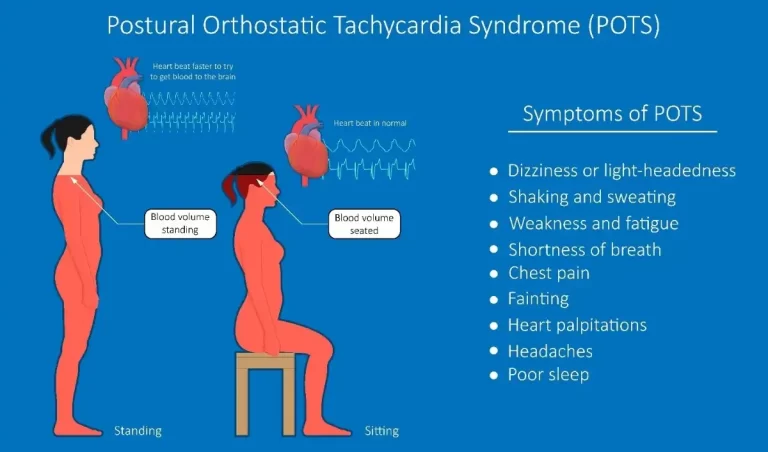
As per a post published in The Washington Post, around 3 million Americans have been affected by POTS (postural orthostatic tachycardia syndrome). In addition to the above, at least 1 million new patients are affected by the condition after pandemic.
There are people who are still not aware with this condition. As per a study conducted in this regard, 2-14% people with COVID have chances to develop POTS. The Washington Post also revealed that it is more common in women.
Postural Orthostatic Tachycardia Syndrome (POTS) is a type of autonomic dysfunction that affects the cardiovascular system. It is characterized by a heart rate increase of 30 beats per minute or more, or a heart rate of over 120 beats per minute, within ten minutes of standing up, in the absence of other conditions that could explain this response. In this article, we will delve into the causes, symptoms, diagnosis, and treatment options available for POTS.
Causes
The exact cause of POTS is not well understood, but it is believed to be due to a dysfunction in the autonomic nervous system. The autonomic nervous system (ANS) is responsible for regulating the body’s involuntary functions, including heart rate, blood pressure, digestion, and temperature control.
Some researchers believe that POTS is caused by a malfunction of the autonomic nervous system, which leads to an inadequate response to changes in position, resulting in a rapid heart rate and a drop in blood pressure. Others speculate that it is due to an autoimmune response, where the immune system attacks the autonomic nervous system, causing inflammation and damage to the nerves.
Symptoms
The symptoms of POTS can vary widely from person to person, and they can be disabling for some individuals. Some common symptoms of POTS include:
- Dizziness or lightheadedness when standing up
- Fainting or near-fainting
- Heart palpitations or rapid heart rate
- Fatigue
- Brain fog or difficulty concentrating
- Headaches
- Shortness of breath
- Chest pain
- Nausea
- Exercise intolerance
- Sleep disturbances
Diagnosis
The diagnosis of POTS is made through a combination of clinical evaluation, medical history, and diagnostic testing. A doctor will perform a thorough physical exam and take a detailed medical history to determine if the symptoms are consistent with POTS. Diagnostic tests may include:
- Tilt table test – The patient is strapped to a table that is then tilted at different angles to see if changes in position trigger symptoms.
- Blood tests – These tests are used to rule out other conditions that can cause similar symptoms, such as anemia, thyroid dysfunction, or diabetes.
- Autonomic function tests – These tests measure the function of the autonomic nervous system, including heart rate variability and blood pressure responses.
- Electrophysiological tests – These tests measure the electrical activity of the heart, such as an electrocardiogram (ECG).
Treatment
There is no cure for POTS, but there are several treatment options available that can help manage the symptoms and improve quality of life. Treatment options may include:
- Medications – Various medications can be used to control the symptoms of POTS, including beta-blockers, fludrocortisone, and midodrine. These medications can help regulate heart rate and blood pressure, improve blood flow, and reduce symptoms such as dizziness and fatigue.
- Lifestyle changes – Certain lifestyle changes can be helpful for managing POTS symptoms, such as drinking plenty of fluids, avoiding triggers such as heat and alcohol, wearing compression stockings to improve blood flow, and increasing salt intake.
- Exercise – Exercise can be beneficial for people with POTS, as it can help improve cardiovascular fitness and increase blood volume. However, it is essential to start slowly and gradually increase the intensity and duration of exercise to avoid exacerbating symptoms.
- Physical therapy – Physical therapy can be useful for improving balance, strength, and flexibility, and reducing symptoms such as dizziness and fatigue.
- Counseling – POTS can be challenging to live with, and counseling can help people manage the emotional and psychological impact of the condition.
Conclusion
POTS is a challenging condition
Also Read: What Are the Foods to Avoid When Taking Carvedilol?